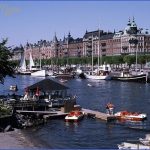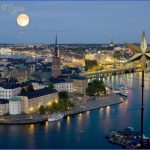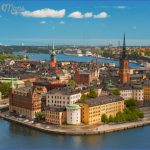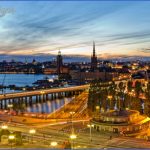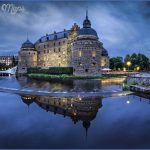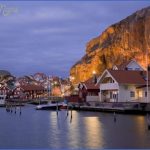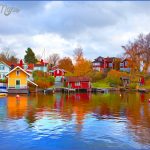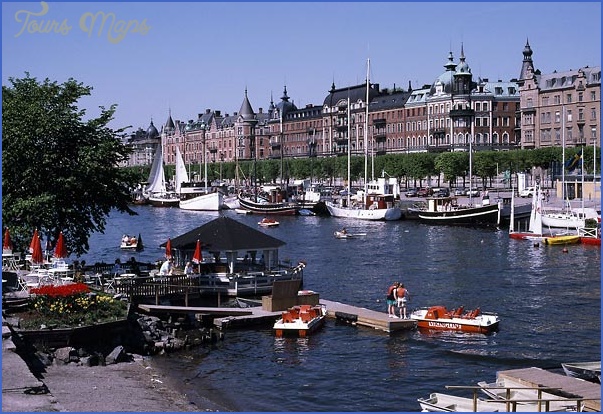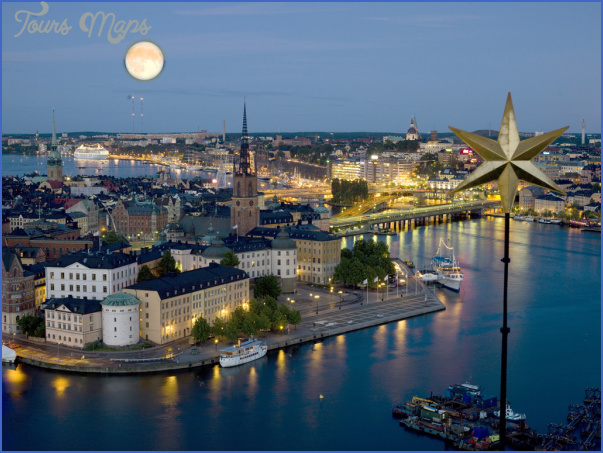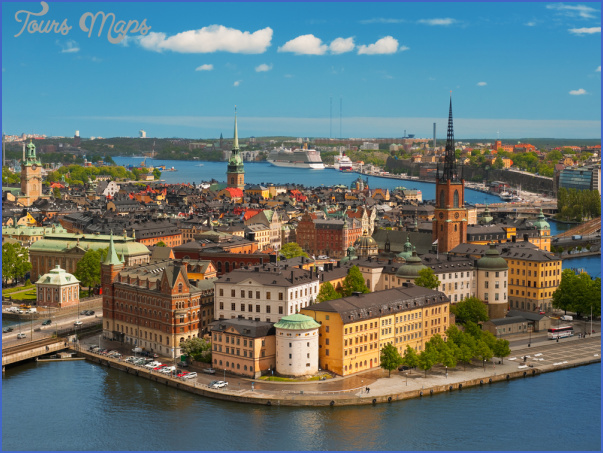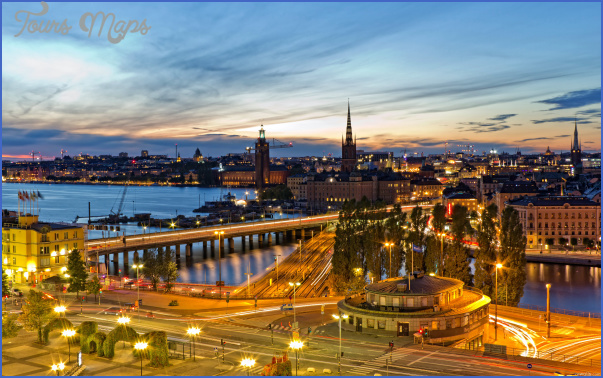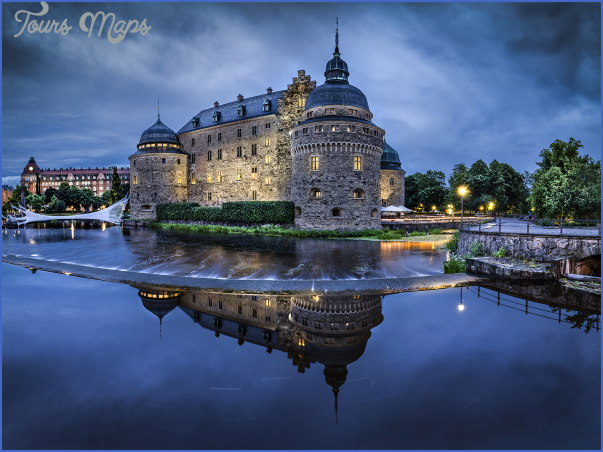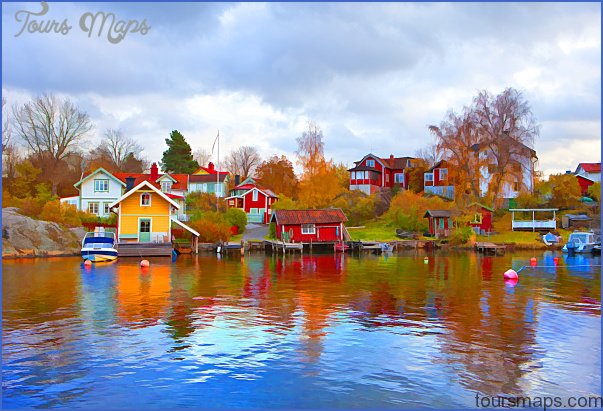OFFICIAL NAME: KINGDOM OF SWEDEN
Blue is the omnipresent color of Sweden. Blue waters, blue skies: in the sunlight, sparkling blues; ominous blues when the skies are overcast. Even the Swedish flag is a yellow cross set in a field of blue.
Stockholm is the blue city, mainly because it is a series of fourteen islands, the Venice of the North. The blueness sets off what is probably the most imaginative sculpture garden in the world. Millesgarden, the sculpture garden setting along the water, was given to Stockholm by Carl Milles. His sculptures seem to leap into the blue of the sky. Of the two great Scandinavian sculptors, Vigelund in Oslo and Milles in Stockholm, Milles is in the Greek tradition; man is beautifully proportioned. Milles’ figures fly into space, images of Gods. Oslo’s Vigelund Sculpture Park shows men and women as heavy, blocky figures, struggling upward. Vigelund’s view is evolutionary, many straining upward from the soil, suffering, heavy and barely overcoming.
As cities go, Stockholm is low-rise, no skyscrapers blocking the sun. Compared to Paris, London or Vienna, Stockholm as a whole is architecturally commonplace. The City Hall, The Royal Palace, The Opera House, The House of the Swedish Nobility, Reddarhuset, are noteworthy. The Royal Palace is massive enough, 250 rooms, but a block structure with minimal grace.
Outside of Stockholm is Drottingholm Palace, a small Versailles, with French park, straight-lines walkways, fountains, reflecting pools and heroic sculpture. It also has a court theater where summer operas are performed.
About an hour north is the museum village of Sigtuna, first capital of Sweden, a pleasant, lake-sited place with the preserved homes and stores of the past. Not far away is the university town of Uppsala, with a cathedral notable for its clean lines and bright mien, far cry from the oppressively dark cathedrals of Southern Europe.
SWEDEN Photo Gallery
Maybe You Like Them Too
- The Best Cities To Visit in The World
- World’s 10 Best Places To Visit
- Coolest Countries in the World to Visit
- Travel to Santorini, Greece
- Map of Barbados – Holiday in Barbados

